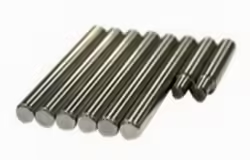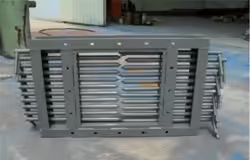
S7 Tool Steel vs 4140: 5 Must-Know Performance Facts
Table of Contents
Introduction
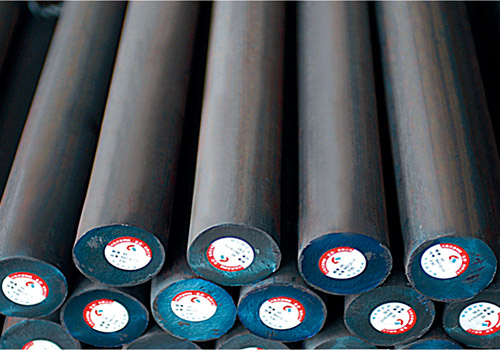
Selecting the right steel for tooling or structural parts often comes down to matching material properties to the demands of the job. Two popular choices in many industries are S7 tool steel and 4140 alloy steel. These steels share some similarities but excel in different areas. S7 is best known as a shock-resistant, high-carbon tool steel designed for extreme toughness and repeated impacts. It belongs to the AISI “Group S” of shock-resisting tool steels (S1, S2, S5, S6, S7), engineered to hold high hardness while absorbing heavy stresses. In contrast, 4140 is a versatile chromium-molybdenum alloy steel with excellent tensile strength, toughness, and fatigue resistance, often used in rotating or structural components.
Material selection can also affect safety and efficiency. For example, a brittle part might suddenly fail, whereas a tougher steel would give warning by deforming first. S7 and 4140 often come up together in specifications because both are common tool steels, but their design intent is different. 4140 is typically tempered to a balanced hardness (~50 HRC) for strength and ductility, whereas S7 is often tempered harder (~55–58 HRC) to maintain tool edges. Below we outline essential facts about how these materials differ in composition, properties, and cost to help you make an informed decision.
Key Performance Facts (Summary):
- Higher Hardness (S7 Tool Steel): S7 can be heat-treated harder than 4140 (up to ~58 HRC vs ~50 HRC).
- Toughness (S7 Tool Steel): S7 maintains much higher impact resistance; 4140 is more brittle at equivalent hardness.
- Strength (4140 Steel): 4140 has excellent tensile strength and fatigue resistance in structural use.
- Machinability & Cost (4140 Steel): 4140 machines and welds more easily and costs less.
- Typical Use: S7 is chosen for heavy-duty punches and dies; 4140 for shafts, gears, and fasteners.
In terms of classification, S7 is designated as an AISI/ASTM shock-resisting tool steel, while 4140 is an AISI/SAE chromium–molybdenum alloy steel. This means their specifications and stock designations differ. For example, S7 may be stocked under ASTM A681/A682 tool steel standards, whereas 4140 follows ASTM A829 or A335 as an alloy steel. Knowing these spec numbers helps ensure you order the correct material.
The table below provides a high-level comparison of key metrics:
| Property | S7 Tool Steel | 4140 Steel |
|---|---|---|
| Composition | ~0.45–0.55% C, 3.0–3.5% Cr, 1.3–1.8% Mo(plus ~0.2–1.0% Si, 0.1–0.5% V) | ~0.38–0.43% C, 0.8–1.1% Cr, 0.15–0.25% Mo (plus ~0.75% Mn, ~0.2–0.3% Si) |
| Hardness (max) | Up to ~58 HRC (fully hardened) | Up to ~50 HRC (typical quench & temper) |
| Tensile Strength | High (up to ~1400 MPa in quenched condition) | ~690–1080 MPa (depending on treatment) |
| Toughness | Very high (shock-resistant) | Good (high for alloy steel, but lower than S7 at high hardness) |
| Impact Resistance | Excellent (resists chipping, high Charpy energy ~13–17 J) | Good (rated for moderate shock loading) |
| Wear Resistance | Better (forms hard carbides; retains edge longer) | Moderate (can be hardened but fewer carbides) |
| Machinability | Fair to good when annealed (~70–75% rating) | Good when annealed (~65% rating) |
| Heat Treatment | Air-hardening (minimal distortion) | Oil-quenched (more distortion) |
| Applications | Heavy punches, dies, chisels, extrusion/forging dies | Shafts, gears, axles, fasteners, general machinery parts |
| Cost | Higher (specialty alloy) | Lower (common alloy) |
The table above summarizes key differences. The following sections explain each property and its practical implications in detail.
Physical and Mechanical Properties
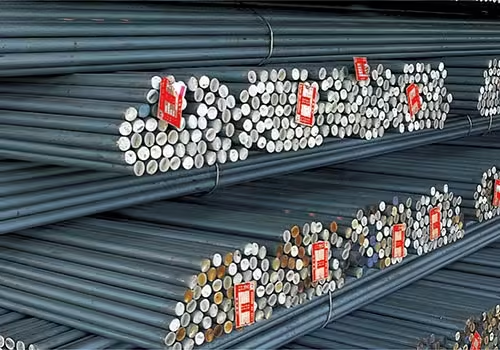
Chemical Composition
S7 Tool Steel and 4140 are both alloy steels but with different chemistries. S7 (UNS T41907) is a high-carbon, high-silicon, chromium–molybdenum tool steel. It typically contains ~0.50% carbon, 3.0–3.5% chromium, ~1% silicon, ~1.3–1.8% molybdenum, plus small vanadium and manganese. In contrast, 4140 (UNS G41400) is a lower-alloy steel, roughly 0.38–0.43% carbon, ~0.75% manganese, 0.8–1.1% chromium and 0.15–0.25% molybdenum.
The higher chromium and moly in S7 improve hardenability and wear performance, while 4140’s simpler alloy mix makes it more ductile and easier to form or weld. The higher alloy content in S7 also affects hardenability: with ~5% chromium, S7 can be air-cooled and still attain full hardness even in thick sections, whereas 4140 often needs a faster oil quench to harden fully.
Hardness and Strength
One major difference is the hardness achievable. S7 tool steel can be heat treated to higher hardness than 4140. SteelPro Group notes S7 Tool Steel reaching about 58 HRC after full hardening, whereas 4140 typically is tempered around the low 50s HRC for most uses. In tensile terms, both can reach similar ultimate strengths when quenched. For example, properly heat-treated 4140 may have a UTS of ~690–1080 MPa, and S7 can attain comparable or higher UTS (~1400 MPa). However, the way they carry that strength differs: S7 is engineered to resist fracture under sudden loads, whereas 4140 is valued for high static strength.
For context, S7’s hardness can range widely with tempering. As one report shows, S7 held 57 HRC when quenched at 941°C and tempered at just 149°C. Tempering the same S7 part at 449°C reduces hardness to ~53 HRC, and at 649°C to ~41 HRC. In contrast, 4140 is often hardened to around 48–52 HRC and tempered to achieve a good balance of strength and toughness. In practice, if you need a cutting tool or die edge that stays extremely hard, S7 has the edge. If you need a strong structural part (like a shaft) with some toughness, 4140 is usually sufficient.
Toughness and Shock Resistance
Toughness is where S7 Tool Steel really stands out. Toughness means resisting fracture under impact. S7’s “shock-resisting” alloy gives it very high impact toughness even at high hardness. Charpy tests on S7 Tool Steel have shown energy absorption in the range of roughly 13–17 Joules for tempered martensite, which is very high for a hardened steel. In contrast, 4140, if hardened to 50+ HRC, will have a much lower Charpy value (often only a few Joules). In other words, S7 Tool Steel is designed to take heavy blows without breaking, whereas 4140 is not.
For example, consider a punch tool made from each steel and struck repeatedly. The S7 Tool Steel punch will dull and deform gradually, whereas the 4140 punch would likely crack or chip. Industries use S7 for exactly this reason: its extra toughness ensures safety and durability under repeated shock loads. By contrast, 4140 is classed as a structural alloy with good fatigue and impact resistance for its category, but it is not a “shock steel.” If a sudden impact is applied to 4140 at high hardness, it may bend or fracture; S7 Tool Steel would survive. Thus, for any application involving heavy hammering, forging, or stamping, S7’s superior toughness is a critical performance factor.
Wear Resistance
S7’s alloy content and higher hardness give it better abrasive wear resistance than 4140 when both steels are at similar hardness. The extra chromium and vanadium in S7 form hard carbides, so it holds an edge or resists grinding-down under friction. In practical terms, this means S7 tool steel typically need sharpening or replacement less frequently than 4140 tools under the same loads. For example, a shear blade made of S7 will stay sharp longer when cutting metal than an identical blade made of 4140.
That said, remember neither alloy is a specialized high-chrome tool steel like D2. If extreme abrasion resistance (e.g. cutting hard rock or sand) is required, other grades might be needed. Within the scope of normal tooling, however, S7’s higher wear life is notable. In contrast, 4140 (with less carbide-forming alloy) will wear faster in abrasive tasks at the same hardness. This doesn’t mean 4140 is “soft” – it can still be heat-treated to a respectable hardness – but if two parts of equal hardness were run in a shear, the S7 one will generally last longer before wearing through.
Machinability and Heat Treatment
In the annealed (soft) condition, both steels machine reasonably well. Annealed 4140 has a machinability index of about 65% (relative to 1212 steel), which means it is quite easy to cut with HSS or carbide tools. Annealed S7 is slightly higher (around 70–75%). In practice, this means normal machining strategies work for both when they are soft: drills, mills, lathes with standard speeds. For example, a shop might rough-turn annealed bars of either steel without special tooling.
However, once hardened, the situation changes. A hardened 4140 part (50 HRC) is still easier to machine than a similarly hardened S7 (55+ HRC). Cutting hardened S7 requires expensive carbide or ceramic inserts and very slow feeds. Many shops therefore rough-machine an S7 part in annealed state and only do final grinding after hardening. By contrast, 4140 might sometimes be finish-machined at intermediate hardness because it is not pushed as hard on toughness.
Heat treatment behavior also differs: S7 Tool Steel is air-hardening (sometimes oil-quenched). This means after austenitizing, an S7 workpiece can be cooled in air and still harden fully with minimal distortion. In practice, large or complex S7 dies often come out of quench closer to the correct dimensions. 4140 almost always requires an oil (or even water) quench to achieve high hardness. Oil quenching introduces higher stresses and more warping.
Therefore, 4140 parts often need careful fixturing or even stress-relief annealing after hardening. Both steels are then tempered to achieve final hardness: tempering S7 at higher temperatures reduces its hardness from ~57 HRC down to ~41 HRC (for more toughness), while 4140 tempering schemes typically aim for 48–52 HRC with good ductility.
Real-World Use Cases and Performance

In practice, the choice between S7 and 4140 often comes down to the demands of the application. S7 tool steel shines in heavy-duty, high-impact tooling and dies. For instance:
- Cold-Work Tooling: S7’s high toughness makes it ideal for blanking/forming dies, shear blades, punches and heavy stamping tools.
- Hot-Work Tooling: It’s also used in forging and extrusion dies, where it can withstand heat and shock. Tool steels references note S7’s suitability in extrusion and forging dies up to about 538°C.
- Cutting Tools: Components like large shear knives or metal-cutting mandrels often use S7 to resist chipping and blunt wear.
- Mold Components: Some high-stress plastic injection mold parts (e.g. core pins, ejectors) are made from S7 to resist thermal shock and wear.
In contrast, 4140 alloy steel is a workhorse for shafts, gears, and structural parts:
- Rotating Components: 4140 is commonly used for drive shafts, axles, spindles and other rotating machinery parts.
- Gears and Pinions: Many gears and pinion shafts are 4140, valued for its strength and fatigue resistance.
- Fasteners and Framing: High-strength bolts, screws, and frame components in machines are often 4140, since it can be heat-treated for strength and still welded or machined.
- Firearms/Defense: Many firearm parts (barrels, bolts, receivers) use 4140 for its proven strength and toughness.
- General Industrial Parts: 4140 bar is used in machine frames, brackets, and heavy-duty fixtures where a balanced property set and lower cost are advantageous.
It’s worth noting that S7’s higher alloy content also gives it slightly better corrosion resistance than 4140 (though neither is stainless). 4140’s wide use in industry (automotive, aerospace, oil & gas) relies on its combination of strength and toughness. In field performance, S7 tools tend to wear down gradually under severe loads, whereas an overloaded 4140 tool might fail suddenly.
In summary, S7 is the go-to when toughness and impact resistance are paramount, while 4140 is preferred when high static strength, weldability, and economy are top priorities.
Cost, Availability, and Machinability
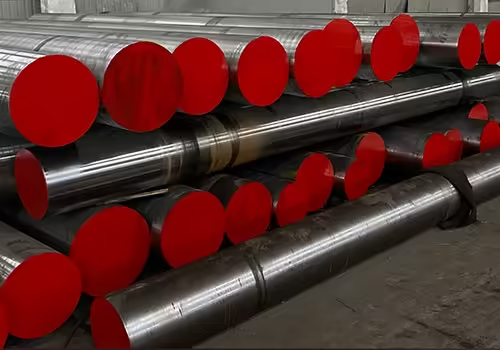
For buyers and project planners, practical factors like cost and availability can sway the decision.
Material Cost: S7 tool steel is significantly more expensive per pound than 4140. One metalworking source notes bluntly that “4140 steel is often more cost-effective than S7”. SteelPro Group similarly observes that 4140’s simpler chemistry leads to a lower price. In practice, you might find 4140 bar priced dozens of percent lower than S7 of the same size. For example, a large S7 billet could cost 30–100% more than an equivalent 4140 billet.
Availability: 4140 is ubiquitous in the supply chain. It is stocked by almost all steel distributors in many shapes (round bar, hex, tube, etc.). S7, being a specialty tool steel, is usually only carried by tool-steel suppliers, often as ground or certified bar. This means 4140 is usually quicker to source and available in more sizes. If you need a quick-turnaround job or off-the-shelf material, 4140 is easier to procure. In contrast, S7 tool steel may require ordering from a specialty mill or distributor, possibly with longer lead time and minimum order quantities.
Machinability: In annealed condition, 4140 and S7 tool steel are both fairly easy to machine. We noted machinability indices of ~65% for 4140 and ~70–75% for S7. In practical terms, shops can run standard drills and mills on both when soft. However, once hardened, S7 becomes much more challenging. Hardened 4140 (around 50 HRC) can still be turned or milled with quality carbide cutters, whereas hardened S7 (55+ HRC) requires the slowest feeds and strongest carbide or ceramic tools. Many manufacturers therefore rough-machine S7 in the annealed state and postpone finish grinding until after heat treatment. This means machining time and tool wear are higher for S7 parts.
Weldability: 4140 can be welded with proper preheat and post-heat treatment. Its moderate carbon allows typical weld rods (e.g. E7018) with preheating (often ~350°C) and tempering after welding. S7 tool steel, on the other hand, is not normally welded in service due to its high carbon and alloy content. It has moderate weldability at best, requiring significant preheat (~400–450°C) and controlled cooling to avoid cracks. In practice, field repairs of S7 tools often involve building up with a lower-carbon buffer layer rather than direct welding.
To summarize: 4140 is generally cheaper, easier to find, and more forgiving in fabrication. It machines quickly (in soft condition) and can be welded, making it attractive for budget or time-sensitive projects. S7 tool steel carries a premium cost that is justified only by its superior performance under heavy impact. In design reviews, engineers often only specify S7 when the application cannot tolerate failure – otherwise 4140 is used by default for its good-enough performance at lower cost.
FAQ
Q: When should I choose S7 tool steel over 4140?
A: Use S7 when parts will face heavy impacts or shock loading. If you need a tool or die that is repeatedly struck (forging hammers, stamping punches, etc.), S7’s toughness will provide a much longer life. 4140 is sufficient when loads are more static or uniform (shafts, gears) and toughness demands are moderate. In brief: S7 = impact and wear, 4140 = strength and convenience.
Q: Which steel is harder and which is tougher?
A: S7 can be hardened to higher HRC (typically 55–58 HRC) than 4140 (about 50–52 HRC). Conversely, S7 is engineered to be tougher at those high hardness levels, absorbing shocks that would crack 4140. So S7 is tougher, while 4140 is still strong but more brittle if hardened equally. This hardness-versus-toughness tradeoff is key: S7 stays hard and absorbs energy, whereas 4140 cannot achieve as high hardness without losing much toughness.
Q: Can I use 4140 instead of S7 for dies or tools?
A: Only if the application isn’t very demanding. In light-duty tooling where cost is a concern, 4140 can be a substitute. But beware: a 4140 tool in heavy impact will wear or break much sooner. For example, a stamping die made of 4140 might only run a fraction of the strokes of an S7 tool steel die before chipping. For most high-shock tools, S7 is recommended. If you must substitute, heat treat 4140 properly (but remember it will be more brittle) and expect a significantly shorter life.
Q: Is S7 tool steel or 4140 better for machining and welding?
A: Machining: Both are fairly machinable when annealed, but 4140 is easier. You can use high-speed steel or carbide on annealed 4140 at normal feeds. Annealed S7 machines similarly, but keep in mind that figure refers to the soft state. After hardening, an S7 part (~58 HRC) requires very slow feeds and premium carbide/ceramic tools, whereas 4140 (~50 HRC) is still more forgiving.
Shops often rough-machine S7 tool steel in the soft state and finish grind after hardening, while 4140 parts may sometimes be machined at higher hardness.
Welding: 4140 can be welded (with precautions). Preheat around 350°C and post-weld heat treatment are typical to avoid cracking. S7, by contrast, is rarely welded; it needs a strong preheat (~400–450°C) and controlled cooling, and even then is prone to cracking. In practice, repairs on S7 are usually done by remelting with a softer filler or by replacement, not by simple welding.
Q: Is one steel more corrosion resistant?
A: S7 tool steel has more chromium (3–3.5% vs ~1%), so it resists rust slightly better. However, neither steel is corrosion-resistant. Both will rust in humid or wet environments. For example, a bare 4140 or S7 surface will oxidize over weeks in air. In corrosive applications, both should be protected with coatings, oil, or stainless cladding. If you need even slight corrosion resistance, S7 has a minor advantage thanks to the extra Cr.
Q: What about heat treating differences?
A: S7 is an air-hardening (or still-oil-hardening) steel, whereas 4140 is typically oil-quenched. Practically, this means an S7 part can be cooled in still air after austenitizing and still harden, resulting in minimal distortion. 4140 must usually be quenched in oil (or water) to achieve high hardness, which causes more warping. Both steels must then be tempered: S7 is often tempered around 175–375°C (350–700°F) to achieve the desired hardness, while 4140 is often tempered around 200–400°C. As a rule of thumb, tempering at a higher temperature (~500°C) is used on 4140 to maximize toughness, whereas to get to S7’s maximum hardness, you temper around 175–250°C. The exact cycle should follow steelmakers’ guidelines for each grade.
Q: Are there alternative grades similar to S7 or 4140?
A: Yes. Alternatives to S7 include other shock-resisting tool steels like AISI S6 (closely similar) or AISI S5 (with slightly lower impact toughness). High-speed steel A2 is harder but less tough, and S2 is also in the shock steel family. Alternatives to 4140 include steels like 4130 (a similar Cr-Mo with slightly less carbon), 4340 (adds nickel for extra toughness), or 8660 (a nickel-steel spring alloy). International equivalents: 4140 corresponds to EN 42CrMo4 or JIS SCM440; S7 corresponds to DIN 1.2343. Each substitute has its own balance of hardness, toughness, and weldability.
Q: What industries commonly use S7 or 4140 steels?
A: 4140 is extremely common in automotive (drive shafts, crankshafts, suspension components), aerospace (landing gear pins, actuators) and general machinery. It is also used in oil & gas and power transmission parts. S7 is common in metal fabrication industries – for example in forging, extrusion, blanking presses, and heavy shear machines. You’ll also see S7 in parts of plastic injection molds or stamping dies that must endure high impact or thermal cycling.
Q: Which steel is better at high temperatures or hot work?
A: S7 handles high temperatures better. Toolmakers often rate S7 usable in hot forging or extrusion dies up to about 538°C. It retains strength at red heat better than 4140. 4140 should not be used much above ~400°C, since it will soften significantly. In other words, for hot-work applications (die-casting, hot forging, etc.), S7 is generally the preferred choice.
Q: How do they perform under fatigue (cyclic loading)?
A: 4140 is noted for its high fatigue strength, which is why it is often used in rotating shafts and springs under cyclic loads. Many automotive parts rely on 4140 for millions of cycles without failure. S7, while tough, is not primarily chosen for long-life fatigue – it’s chosen for one-time shocks. Under cyclic loading, S7 is durable but its advantage is shock absorption rather than pure fatigue life. If long fatigue life is required, 4140 or steels like 4340 (with added nickel) are usually preferred.
Q: Can S7 tool steel or 4140 be forged?
A: 4140 is commonly forged into parts (it has good hot workability). S7 is less commonly forged and typically supplied as rolled or pressed billet. If you must forge S7, it requires higher preheat (similar to other tool steels) and careful control. Most large S7 parts are instead machined from bar stock because of these challenges. In short, 4140 is much more forgable.
Q: What about cost differences in practical terms?
A: As noted, S7 tool steel is significantly more expensive than 4140. In practical terms, an S7 bar can cost 30–100% more than a 4140 bar of the same size. This can sway decisions: if a design only needs moderate impact resistance, a buyer often chooses 4140 to save money. Only when shock loads are very high does the extra cost of S7 pay off in longer tool life and lower maintenance. It’s common to compare supplier quotes on both grades when budgeting a project.
Conclusion
Selecting between S7 tool steel vs 4140 depends on matching material strengths to your needs:
- Use S7 for high-impact tools: When toughness and shock resistance are critical (heavy punches, forging/extrusion dies, shear blades), S7 is the better choice.
- Use 4140 for strength and economy: When you need high static strength, fatigue resistance, and lower cost, 4140 is ideal (shafts, gears, axles, fasteners).
- Hardness vs Machinability: S7 achieves higher hardness (≈58 HRC) but machines harder at that hardness. 4140 typically stays around 50 HRC, making it easier to machine and weld.
- Cost and Availability: 4140 is widely stocked and usually cheaper. S7 costs more and may have longer lead times.
- Welding and Fabrication: 4140 welds (with pre/post-heat); S7 is rarely welded in practice.
By considering these facts side-by-side, engineers and buyers can choose the steel that delivers the needed performance and value for their application. Armed with this information, you can specify S7 or 4140 with confidence for your next tooling or components project.

